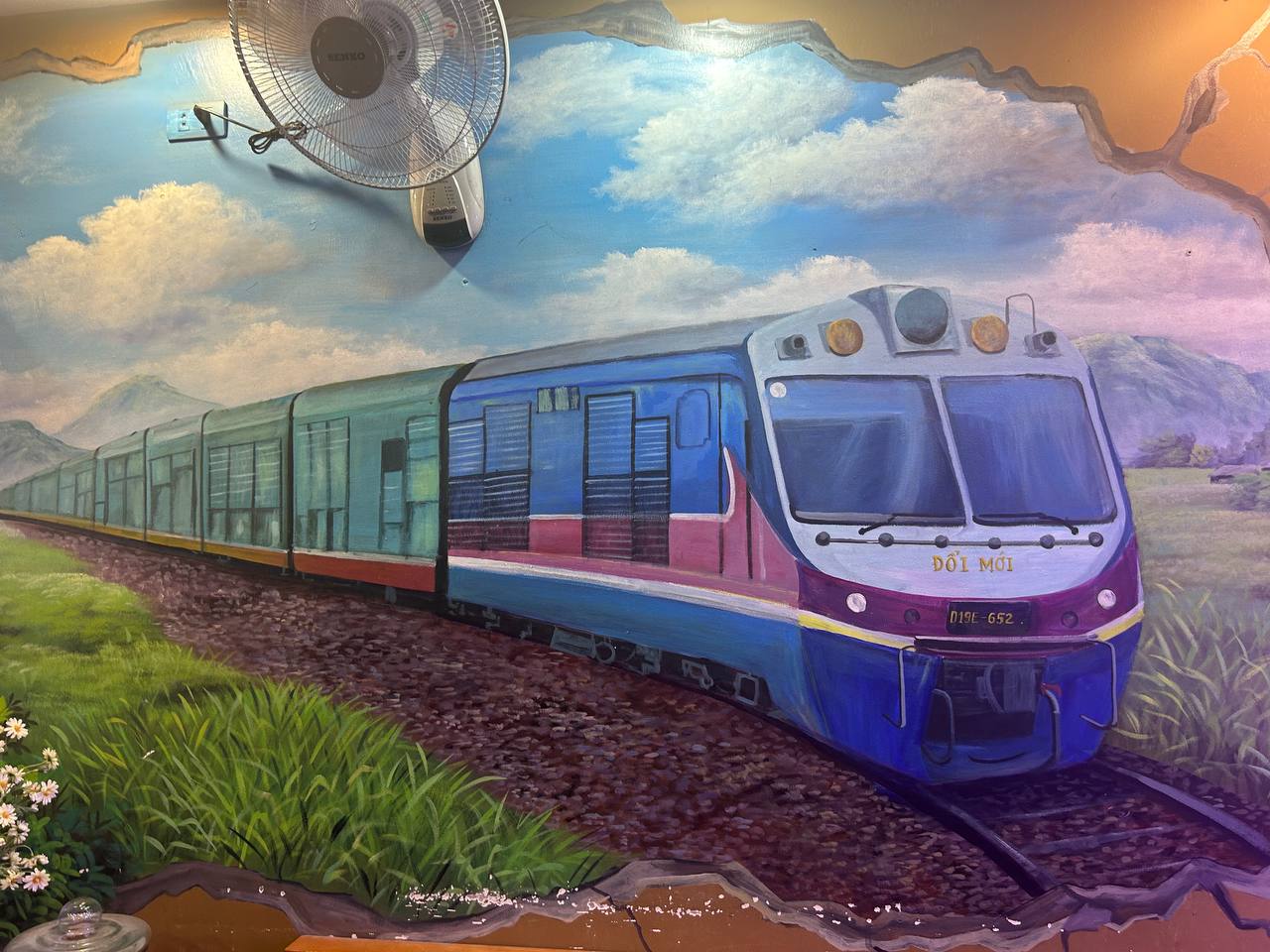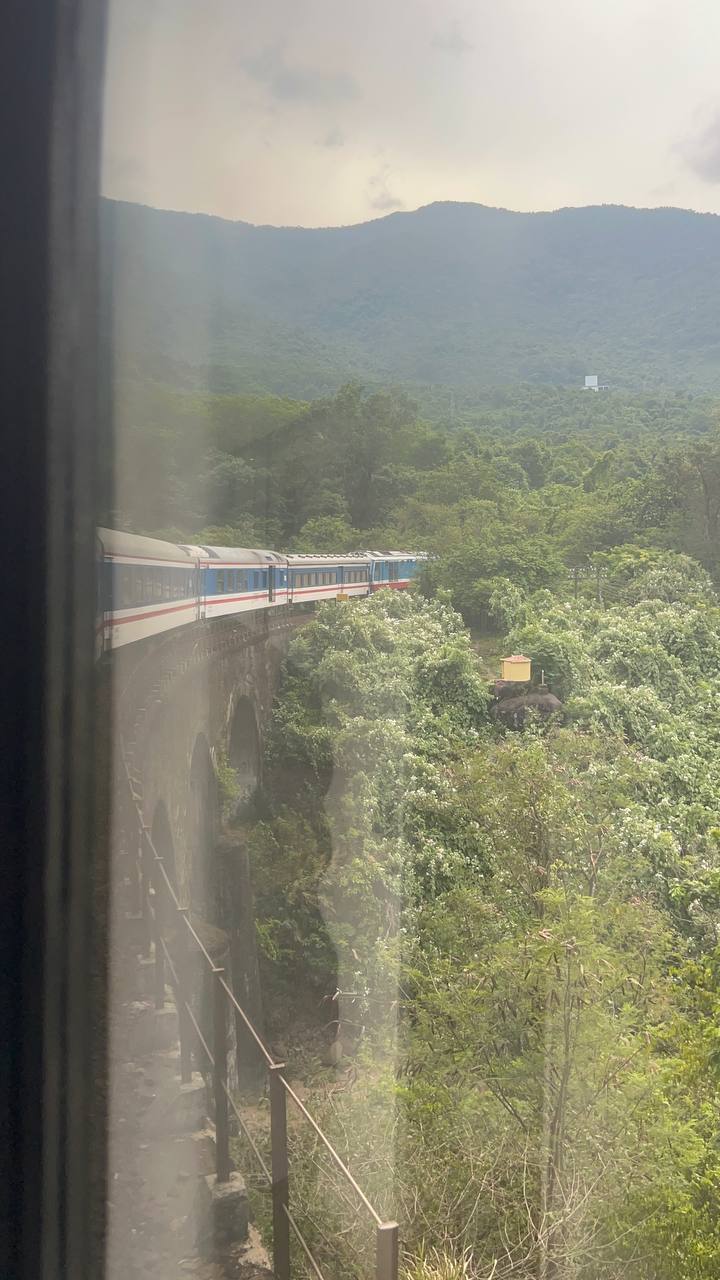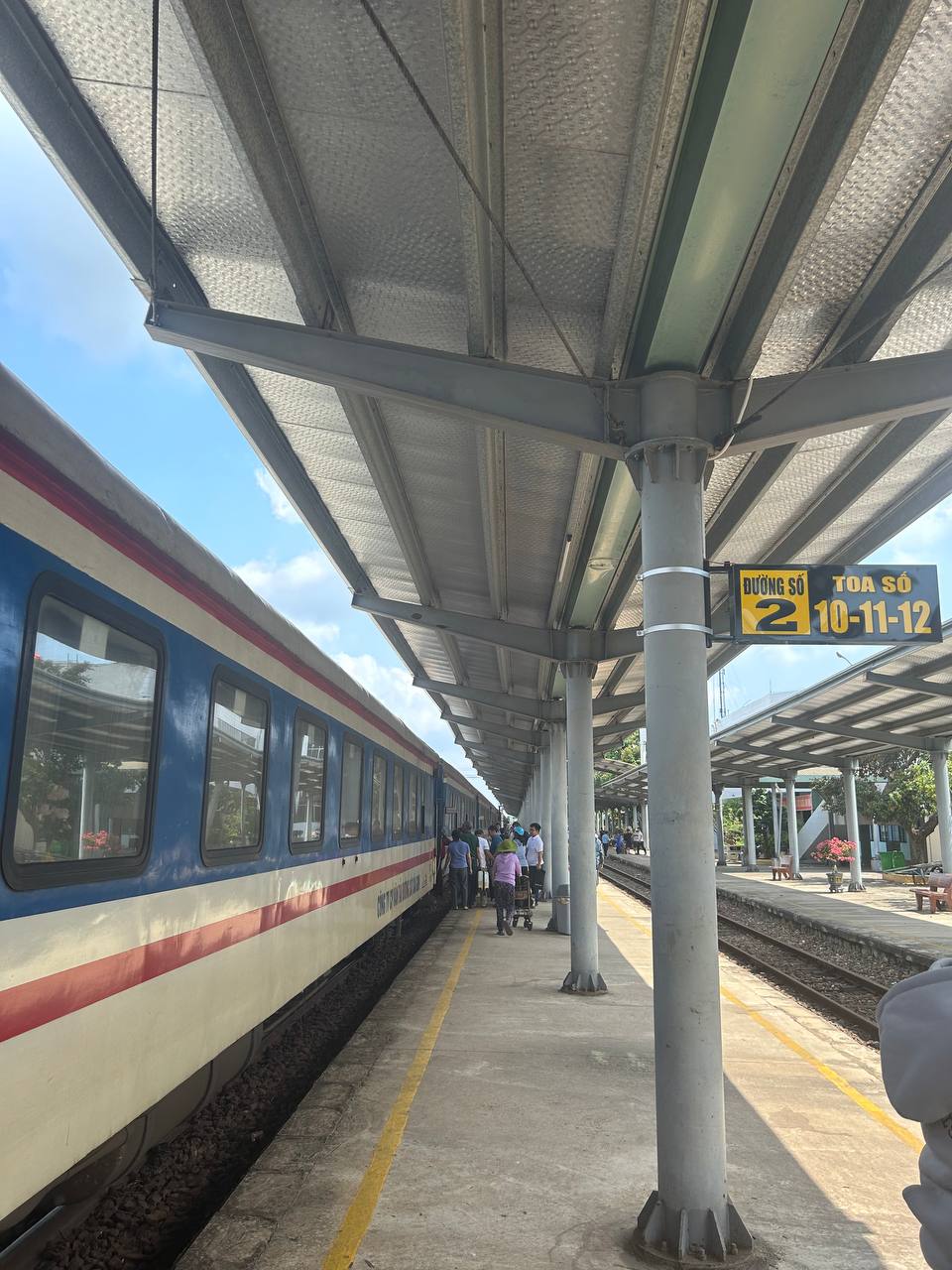Linking North and South Vietnam, as well as representing the country as a united one the Reunification Express is not just extremely important to the Vietnamese, but is one of the most celebrated train journeys in the world.
And it is for this reason that YPT use it not just for a number of our tours, but also offer it to independent visitors to the country. Voted one of the most epic train journeys in the world by Lonely Planet no less this route is not only well priced, but by passing through and along the Vietnamese coast offers some of the best views of any train journey on earth.
Table of Contents
What is the Reunification Express?
Originally built in stages by the French in the early 19th century, by the 1930’s it had linked Hanoi to Saigon in what was at the times three separate countries ruled by the French, Tonkin, Assam and Cochinchina.
Sadly as was only open until war descended on the Vietnamese and indeed while their country was split into the Democratic Republic of Vietnam and the Republic of Vietnam the railway did not run at all.
After reunification extra impetus was put into rebuilding the line, with great help from the Eastern Bloc. And very little has changed since the this time save the journey time being cut by about 20 hours.
Nowadays it is popular with Vietnamese as well as foreigners, as well as being a symbol of a unified and socialist Vietnam.
Reunification Express vital statistics
How long is the Reunification Express? The line covers 1726 kilometers, as well as having…… train stations. For context it covers 178 train stations, with Vietnam Railways only having 276 stations in total. This makes it by far the most important railway line within the country.
Typically the Reunification Express does not exist and is but a mere nickname, And while no line has this exact name there are a number of trains that fit into the Reunification Express genre.
These take between 28 and 30+ hours to complete the full route, although most tourists would break up the journey.
Key stops on the Reunification Express
While there are 180 or so stops on this line three are only a few that are major places, at least for tourists. I will approach these as if you were traveling from the south (Saigon) to the north (Hanoi).
The line starts in Saigon the former capital of the south with the next two major stops being Nha Trang at 12 hours and Da Nang at 16 hours. These are both beach side towns, with Da Nang almost hosting Kim Jong Un during the Trump-Kim summit, before it was switched to the capital of Hanoi.
From here one of the most epic parts of the journey is from from Da Nang to Hue. This is only 3-4 hours, but offers the best views of any leg of the trip. Hue itself is a tourist must, as well as being a street food haven.
From here you can either overnight to Hanoi, or stop in Vinh. Vinh is not exactly a major place, but again has street food, as well as the birthplace of Uncle Ho.
From here it is just 6-7 hours from Hanoi, the capital, home of Bia Hoi and of course the Uncle Ho Mausoleum.
Previously it was possible to take the train from Hanoi to various spots in China, including Nanning,, but this now has to be done overland.



Train type and prices
The trains are like classic old school Chinese ones, although slightly smaller. They have hard seats, AC soft seats, 6 berth hard sleepers and four berth soft sleepers. How long your journey is will dictate the price, but for some context the 16 hour Saigon to Da Nang is about $50 soft sleeper. The AC seats are in general one third cheaper, while the lowest class is half as much.
As not all that many people take the soft sleeper in every leg you should in theory get your own room. In actuality the conductors have spotted a great place to earn money and will put a plant in your room. You then get the choice to pay a fee to have the room to yourself.
This is obviously less of an issue with group travel with us able to block book not just cabins, but whole carriages. There are also some tourist routes with more deluxe options, as well as the ability much like Cambodia to charter a train.
What is it like traveling on the Reunification Express
If you travel by soft sleeper then this is truly one of the most iconic train journeys in the world. Not only are the vets amazing, but the sleeping quarters are cheap and you are well fed and watered. The trains though can be noisy, so if you are not used to sleeping on a train potentially bring ear plugs, or Valium…
You are also allowed to drink on the train, as well as their being designated smoking spots between carriages. This alone makes it far more worthy than a flight any day of the week. And there is an overall nice and indeed friendly atmosphere that is also unobtrusive. Yes you can talk to people on the train, but you can equally enjoy the solitude that train travel offers you.
And the fact that there are plugs within your room also make the Reunification Express a great place to do some writing.
After the Reunification Express
With the train to China no longer currently an option you will need to go overland to Nanning if you wish to take your train journey to the next level. Nanning connects with Beijing which means you can connect with the Trans-Siberian Railway, as well as North Korea by train.
Alternatively there are also routes to the north-east of Vietnam which will take you out very much into the countryside and up into the mountains.
There is also the option to check out Hanoi whilst you are here, with the city offering much to those interested in communism and indeed trains. Train geeks should not miss drinking on Railway Street.
If you are heading from North to South then you can either carry on to the far south and the island of Phu Quoc, or transfer to Phnom Penh from Saigon. This has to be done by bus, but after arriving one can take the train south to Kampot, and transfer to Phu Quoc, or train to the border of Thailand. After this you can cross the border and take the train to Bangkok another fairly iconic and cheap train journey.
List of Reunification Express Trains stations and times
The following is a rough list of the main train stations and the times of departures and arrivals. This is meant only as a guide with the schedule subject to change,.
Train fares for all trains departing from Hanoi to Ho Chi Minh City
Unit: USD
Train from Hanoi to Ho Chi Minh City
| Departs | Arrives | Train No | Hard Seat | Soft Seat | Hard Berth(6) | Soft Berth(4) | |
|---|---|---|---|---|---|---|---|
| 20:55 | 06:50 |
Reunification Express Train
SE1
34hr 55min |
N/A | $65 | $88 | $92 | Book |
| 19:25 | 05:47 |
Reunification Express Train
SE3
34hr 22min |
N/A | $65 | $88 | $92 | Book |
| 15:30 | 05:10 |
Reunification Express Train
SE5
38hr 40min |
N/A | $64 | $86 | $90 | Book |
| 06:00 | 17:10 |
Reunification Express Train
SE7
35hr 10min |
N/A | $64 | $86 | $90 | Book |
South to North timetable (Sai-Hanoi)
Saigon(Ho Chi Minh City) – Hanoi |
|||||
|---|---|---|---|---|---|
| km | Station | SE2 | SE4 | SE6 | SE8 |
| 0 km | Saigon(Ho Chi Minh City) |
19:00 | 23:00 | 09:00 | 06:30 |
| Bien Hoa | 19:39 | 09:39 | |||
Muong Man |
12:48 | 09:42 | |||
Thap Cham |
14:37 | 11:55 | |||
Nha Trang |
02:31 | 05:33 | 16:30 | 13:23 | |
| Tuy Hoa | 07:23 | 18:44 | 15:23 | ||
Dieu Tri |
06:17 | 09:14 | 20:33 | 17:13 | |
| Quang Ngai | 09:13 | 12:02 | 23:32 | 20:31 | |
| Tam Ky | 10:21 | 00:48 | |||
Danang |
11:51 | 14:30 | 02:21 | 23:12 | |
| Lang Co | |||||
Hue |
14:43 | 17:06 | 05:04 | 02:07 | |
| Dong Ha | 15:59 | 06.24 | 03:26 | ||
| Dong Hoi | 17:44 | 19:56 | 08:33 | 05:21 | |
| Dong Le | 10:21 | ||||
| Huong Pho | 11:26 | ||||
| Yen Trung | 12:38 | ||||
Vinh |
21:37 | 23:41 | 13:05 | 09:26 | |
| Cho Sy | 13:53 | ||||
| Thanh Hoa | 00:16 | 15.40 | 11:56 | ||
| Ninh Binh | 16.55 | 13:07 | |||
| Nam Dinh | 02:15 | 17.29 | 13:41 | ||
| Phu Ly | 18.06 | 14:18 | |||
| 1,726 km | Hanoi |
04:02 | 19.26 | 04:45 | 15:28 |
How can I travel on the Reunification Express in Vietnam
We currently use this on our scheduled Vietnam Tour, as well as our South-East Asian Adventure. We can also arrange bespoke trips that take in the Reunification Express…





